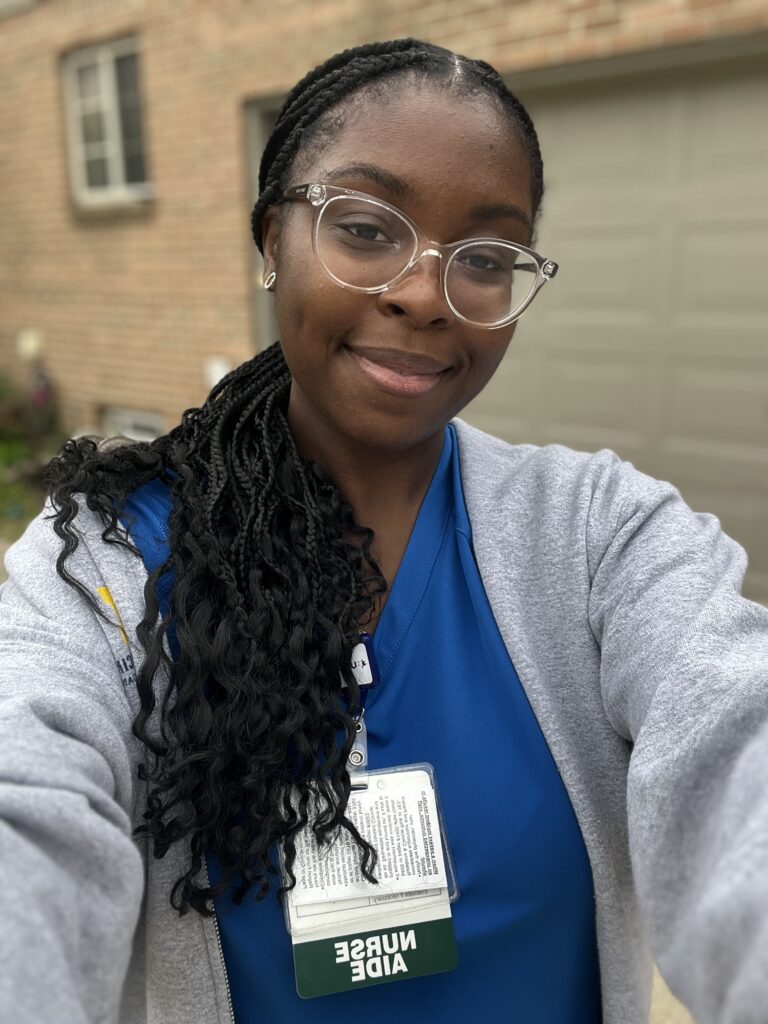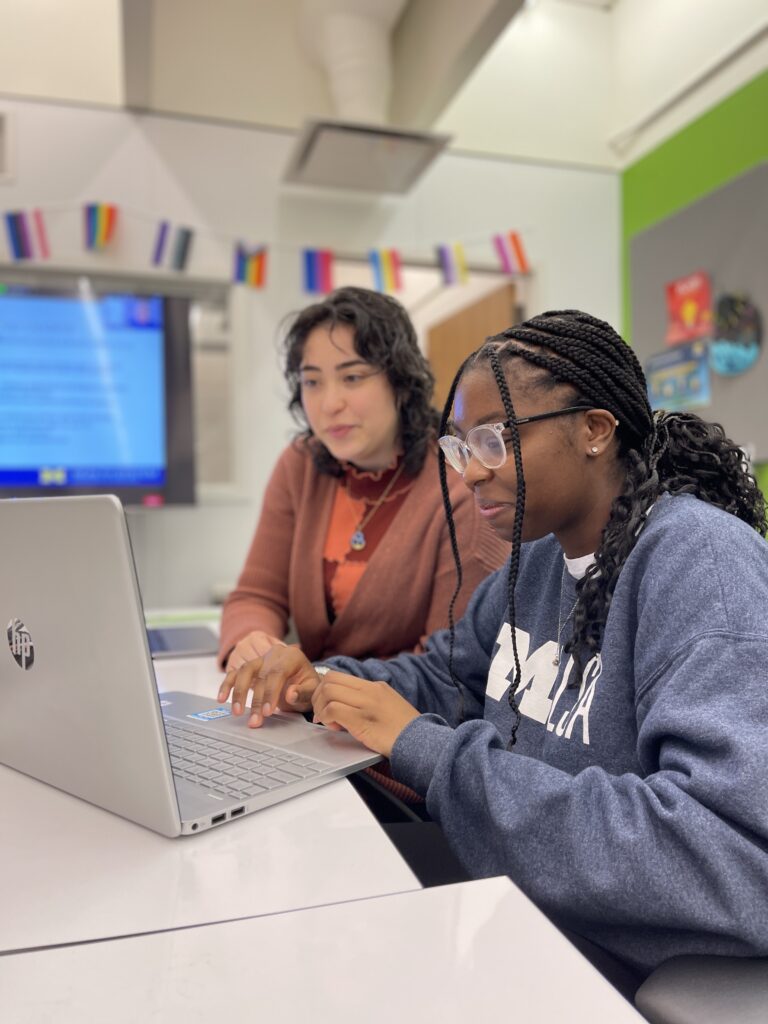Chidimma Udegbunam, a pre-med student at U-M, shares her experience working both as a Certified Nurse Assistant and a healthcare researcher.


When I was notified that I’d been invited to work at the University of Michigan’s Center for Healthcare Engineering & Patient Safety (CHEPS), I was incredibly excited…but also slightly horrified.
As a student on the pre-medical track, I wasn’t quite sure what Industrial and Operations Engineering (IOE) actually entailed, and I definitely wasn’t an engineer. But at the very least, I knew I could help with the “healthcare” and “patient safety” parts. Pre-med students are expected to gain experience in direct patient care roles, which can take multiple forms: phlebotomist, medical assistant (MA), emergency medical technician (EMT), etc. After reading the book Taking Turns: Stories from HIV/AIDS Care Unit 371 by MK Czerwiec, which discusses the AIDS epidemic from the lens of a queer nurse, I decided I wanted to become a certified nursing assistant (CNA). Five months later, in August 2022, I worked my first shift.
Being a CNA has been both incredibly rewarding and incredibly challenging. Every shift brings something new. One day I could be helping multiple patients move to and from their beds using a ceiling lift or a Sara Stedy (best medical device ever made). Another day I could be having a pleasant conversation with a patient as I set up their meal tray. I could be helping a patient get admitted onto the unit, which requires getting their weight, height, and vitals and ensuring the room is preset with everything they may need as they get acclimated to the unit. Things aren’t always that simple, though. I’ve felt extreme disappointment in myself after having a patient yell at me out of frustration because I couldn’t get the blood pressure cuff where it needed to be. I felt my heart ache as I watched a patient break down because I couldn’t perfectly position them on their side, which was the only position where the pain wasn’t as bad. I became overcome with panic after being assigned a patient on carotid blowout precautions because their condition could become fatal if I wasn’t monitoring them carefully enough.
Even though I’ve had all of these experiences—some more anxiety-inducing than others—nothing has filled me with as much fear as my first day at CHEPS when everyone had to map onto the server. The only map I knew of was the talking one Dora kept in her backpack when she went “explora-ing,” and I thought servers were things tech wizards in action movies hacked into to steal information from the government. Here, though, the server is a secure, remote drive we use to store all of our data and analyses, and everyone else seemed to know that already. It’s safe to say that I was feeling the tiniest bit of imposter syndrome. Yet as the weeks have progressed, I’ve come to realize something really important.
When you’re working with a patient, one of the most critical things to understand is that they are in their most vulnerable state. When you have to live your life from the shoebox that is a hospital room—sometimes sharing it with a stranger, having people constantly enter and exit—privacy is extremely hard to come by. That’s why as a CNA or any other healthcare provider, it’s critical to do all you can to ensure a patient’s privacy is protected: closing their curtains, keeping the body parts that aren’t being washed during a bag bath covered with a towel, etc. This same sentiment is shared at CHEPS. After completing multiple trainings about the Health Insurance Portability and Accountability Act (HIPAA) and Protected Health Information (PHI) and holding continuous dialogues about protecting the identities of those whose data we’re utilizing in our research, the privacy of patients (and providers) is one of the most important values we hold here.
However, maintaining privacy isn’t the only parallel I’ve noticed as I’ve become accustomed to working at CHEPS. Asking for help is also something that is welcomed. Just as if I was working in the hospital and I needed help moving a patient, I ask for help if I don’t understand how to use a function in Tableau or how to fix the line of code I accidentally broke. Understanding that it’s okay to ask questions is something I’ve always struggled with, but CHEPS is truly an environment that encourages inquisition. With my firsthand experience in healthcare settings, I’ve also been able to answer others’ questions in return. Realizing that my skill set, though different, is still valuable helped me cure my case of imposter syndrome. Combining the knowledge of people like me who directly see the problems in healthcare with the knowledge of engineering students who know methods to help fix these problems allows for multidisciplinary problem-solving that can attack patient care issues from multiple angles.
After making these connections, I’ve not only been able to better understand my role here, but also the role of CHEPS in healthcare. It’s not that I didn’t understand the impact of my work here at CHEPS early on, but the more I delve into our projects, the more I internalize that my jobs both as a student researcher and as a CNA have the same goal: to prioritize the safety of patients. Each field just uses a different approach to do so. If healthcare providers are the actors in a stage play, then CHEPS is the stage crew that designs the set and calls the curtains, ultimately helping the actors perform to the best of their ability. Healthcare providers and CHEPS work on two sides of the same stage.
As the semester progresses, I hope to continue discovering connections as I work to create a better healthcare system both onstage and behind the scenes.
— Written by Chidimma Udegbunam, CHEPS Student
